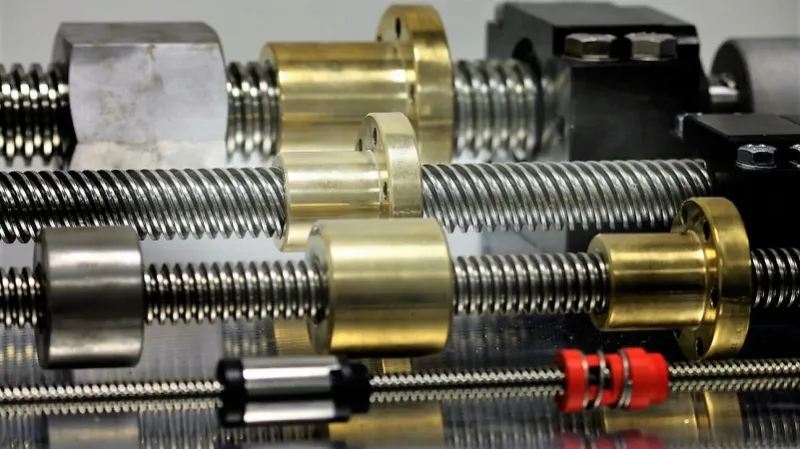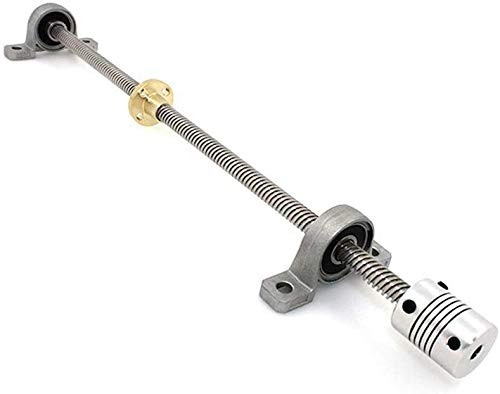Product Description
Product show
| Material | stainless steel,carbon steel,Titanium,alloy steel |
| size | M4-M24 |
| Length | 15-200 mm |
ZheJiang G&T Industry Co., Ltd. is a manufacturer of all standard DIN, BS,JIS and ISO fasteners and other industrial parts with well-equipped testing facilities and strong technical force.
With a wide range, good quality, reasonable prices and stylish designs, our products are extensively used in Mold, Electricity, Construction, Solar energy, Automotive, Machinery & Equipment and other industries.
Q1: Why choose us?
To provide our customers with first-class services in the supply of quality fasteners minimizing costs.
1.1. Vision: We wishes to build successful relations with our partners and be their first choice as an fasteners supplier.
1.2. Mission: professional customer service, and innovation in technology.
Further more, we do not only offer you fasteners with more reasonable quality and price than your expectations, but also would like to be your friend and to provide you market sales suggestion for your reference, if you have a better idea , please feel free to share with us.
Q2.How is quality ensured?
All our processes strictly adhere to ISO9001:2008 procedures. We have strict quality control from producing to delivery.Our company had strong technology support, We have cultivated a group of managers who are familiar with product quality , good at modern concept of management.
Q3:If you can not find on our website the product you need how to do?
You can send the pictures/photos and drawings of the products you need by email , we will check if we have them. We develop new models every month, Or you can send us samples by DHL/TNT, then we can develop the new model especially for you.
Q4:Can You Strictly Follow The Tolerance on The Drawing And Meet The High Precision?
Yes, we can, we can provide high precision parts and make the parts as your drawing.
Q5: How should I order and make payment?
By T/T, for samples 100% with the order; for production, 30% paid for deposit by T/T before production arrangement, the balance to be paid before shipment.
Q6: What’s your Delivery Time?
Standard parts: 7-15days
Non-standard parts: 15-25days
We will make the delivery as soon as possible with the guarantee quality.
Q7:How to Custom-made (OEM/ODM)
If you have a new product drawing or a sample, please send to us, and we can custom-made the hardware as your required. We will also provide our professional advices of the products to make the design to be more realized & maximize the performance.
Q8:Which mode of transport would be better?
In general, the production are heavy, we advice to make delivery by sea, Also we respect your views of other transportation as well.
/* January 22, 2571 19:08:37 */!function(){function s(e,r){var a,o={};try{e&&e.split(“,”).forEach(function(e,t){e&&(a=e.match(/(.*?):(.*)$/))&&1
| Material: | Stainless Steel |
|---|---|
| Type: | Round Head |
| Connection: | Common Bolt |
| Customization: |
Available
|
|
|---|
.shipping-cost-tm .tm-status-off{background: none;padding:0;color: #1470cc}
|
Shipping Cost:
Estimated freight per unit. |
about shipping cost and estimated delivery time. |
|---|
| Payment Method: |
|
|---|---|
|
Initial Payment Full Payment |
| Currency: | US$ |
|---|
| Return&refunds: | You can apply for a refund up to 30 days after receipt of the products. |
|---|

What factors should be considered when selecting lead screws for different mechanical applications?
When selecting lead screws for different mechanical applications, several factors need to be considered to ensure the optimal performance and suitability of the lead screw. Here are some key factors to consider:
- Load Requirements: Determine the maximum axial load and torque that the lead screw will need to support. Consider both static and dynamic loads, as well as any potential overload conditions. Ensure that the selected lead screw has the load-carrying capacity to handle the required loads without excessive deflection or failure.
- Precision and Accuracy: Evaluate the required positioning accuracy and repeatability for the application. Consider the lead screw’s thread pitch, lead error, and backlash characteristics. In applications that demand high precision, such as CNC machines or optical systems, choose lead screws with low backlash and high accuracy to minimize positioning errors.
- Speed and Efficiency: Determine the desired linear speed or travel rate for the application. Consider the lead screw’s thread design, lubrication requirements, and mechanical efficiency to ensure that the lead screw can operate at the required speed with minimal friction and energy loss.
- Environmental Conditions: Assess the operating environment for the lead screw. Consider factors such as temperature variations, humidity, dust, chemicals, and exposure to corrosive agents. Select lead screws with appropriate materials, coatings, and sealing mechanisms to withstand the environmental conditions and ensure long-term reliability.
- Space Constraints: Evaluate the available space for installing the lead screw. Consider the length and diameter of the lead screw, as well as any required support or mounting mechanisms. In tight spaces, stub Acme screws or compact designs may be more suitable.
- Speed and Duty Cycle: Determine the duty cycle of the application, including the frequency and duration of operation at different speeds. Consider the lead screw’s thermal characteristics, lubrication requirements, and the potential for heat generation at high speeds or prolonged operation. Choose lead screws that can handle the anticipated duty cycle without overheating or premature wear.
- Backlash Tolerance: Consider the permissible amount of backlash or play in the system. Backlash refers to the axial movement between the screw and nut when changing direction. Applications that require precise positioning or minimal lost motion, such as machine tools, may require lead screws with low backlash or anti-backlash mechanisms.
- Budget and Cost: Evaluate the budgetary constraints for the application. Consider the cost-effectiveness and value provided by different lead screw options. Compare factors such as initial cost, maintenance requirements, and expected lifespan to select a lead screw that offers the best balance of performance and cost.
By considering these factors, engineers and designers can make informed decisions when selecting lead screws for different mechanical applications. It is crucial to carefully assess the specific requirements of the application and consult with manufacturers or suppliers to ensure the chosen lead screw meets the application’s needs in terms of load capacity, precision, environmental compatibility, and overall performance.

How do lead screws contribute to the adaptability and versatility of mechanical systems in different settings?
Lead screws play a significant role in enhancing the adaptability and versatility of mechanical systems across various settings. Their unique characteristics and capabilities enable precise linear motion, load handling, and control, making them valuable components in a wide range of applications. Here are some key ways in which lead screws contribute to the adaptability and versatility of mechanical systems:
- Precise Positioning: Lead screws provide accurate and repeatable linear motion, allowing for precise positioning of components or loads within a mechanical system. By converting rotational motion into linear motion, lead screws enable controlled and incremental movement, making them ideal for applications that require precise positioning, such as CNC machinery, 3D printers, or automated assembly systems.
- Variable Speed and Velocity: Lead screws offer flexibility in adjusting speed and velocity profiles within a mechanical system. By controlling the rotational speed of the screw, the linear speed and velocity can be varied as required. This adaptability is beneficial in applications that involve changing speed requirements, such as conveyor systems, material handling equipment, or packaging machinery.
- Load Handling Capability: Lead screws can handle a wide range of load capacities, making them adaptable to different mechanical system requirements. They possess high load-carrying capacities and can transmit substantial axial forces, enabling the manipulation of heavy loads. Lead screws find applications in various settings, including lifting mechanisms, industrial automation, aerospace systems, or medical equipment, where load handling is a critical factor.
- Compact Design: Lead screws offer a compact and space-efficient design, allowing for their integration into systems with limited space. Their axial configuration and threaded structure make them suitable for applications where size constraints exist. Lead screws are commonly used in compact devices and systems such as miniature robotics, precision instruments, or medical devices, where space optimization is essential.
- Cost-Effectiveness: Lead screws provide a cost-effective solution for linear motion compared to alternatives such as linear actuators or ball screws. They offer a balance between performance, precision, and cost, making them an economical choice for various applications. Lead screws are widely used in industrial machinery, automotive systems, or consumer products, where cost considerations are important.
- Easy Installation and Maintenance: Lead screws are relatively easy to install and maintain, contributing to their adaptability in different settings. They can be integrated into existing systems or retrofitted without significant modifications. Maintenance tasks such as lubrication or inspection can be performed with relative ease. This ease of installation and maintenance makes lead screws suitable for applications requiring quick deployment, frequent adjustments, or serviceability.
Overall, lead screws provide adaptability and versatility to mechanical systems by enabling precise positioning, variable speed control, efficient load handling, compact design, cost-effectiveness, and ease of installation and maintenance. Their capabilities make them widely applicable across industries and settings, offering a reliable and flexible solution for achieving linear motion requirements in diverse mechanical systems.

Can you explain the role of a lead screw in converting rotary motion to linear motion?
A lead screw plays a crucial role in converting rotary motion into linear motion in mechanical systems. It achieves this by utilizing the helical threads on the screw and the corresponding threads on the nut. Here’s a detailed explanation of how a lead screw accomplishes the conversion:
- Helical Thread Design: A lead screw is designed with a helical thread that wraps around its cylindrical shaft. The thread is typically a continuous spiral groove with a specific pitch, which is the distance between adjacent threads. The pitch determines the linear distance the nut will travel when the lead screw makes one complete revolution.
- Matching Threaded Nut: The lead screw is paired with a nut that has threads matching those on the screw. The nut is typically fixed in place while the lead screw rotates. The nut contains internal threads that engage with the external threads of the lead screw.
- Rotary Motion: When the lead screw is rotated, either manually or by a motor-driven mechanism, the helical threads on the screw cause the nut to move linearly along the length of the screw. The direction and magnitude of the linear motion depend on the direction and speed of the screw’s rotation.
- Linear Motion: As the lead screw rotates, the engaged threads between the screw and the nut create a force that translates the rotational motion into linear motion. The helical threads on the screw push against the matching threads in the nut, causing the nut to move along the length of the screw. This results in linear displacement of the nut and any attached components.
- Precision and Control: The pitch of the lead screw determines the linear distance traveled by the nut for each revolution of the screw. By controlling the rotational motion of the lead screw, precise and controlled linear movement can be achieved. This makes lead screws suitable for applications that require accurate positioning or adjustment of components.
- Load Capacity: Lead screws can handle both axial loads (tension or compression forces) and torque. The helical threads distribute the load over a larger surface area, allowing the lead screw to support and transfer significant loads. By incorporating thrust bearings or other supporting elements, the lead screw can handle high loads while maintaining smooth and controlled linear motion.
Overall, the lead screw’s role in converting rotary motion to linear motion relies on the interaction between the helical threads of the lead screw and the matching threads of the nut. This mechanism provides a reliable and precise means to translate rotational motion into linear displacement, making lead screws a valuable component in various mechanical systems and applications.


editor by Dream 2024-04-25
Leave a Reply